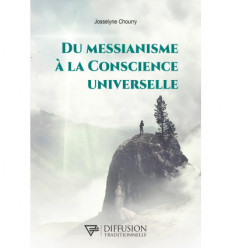Humanism • Spirituality • Well-being
-
0
Product
Products
No products
To be determined
Shipping
0,00 €
Total
Prices are tax included
Product successfully added to your shopping cart
Quantity
Total
There are 0 items in your cart. There is 1 item in your cart.
Total products
(tax incl.)
Total shipping (tax incl.)
To be determined
Un certain juif Jésus – Tome 3
RUPTURES
What a historical analysis reveals about the life and message of Jesus
Description
To a large extent a religious figure is defined by the interconnecting encounters and relationships within which his existence is played out. This is of utmost relevance for a charismatic, religious leader who is always on the move, as is the case with Jesus. Within strictly historical research, what can we hope to gain from this web of relationships within which Jesus developed his often surprising message and work? The third volume thus sets out to determine the reality, in as much as science can do so. The author focuses in turn on the supporters, those he spoke to and the adversaries of Jesus. First of all the crowds that Jesus seemed able to bring together, then the disciples willing to follow him and lastly he pays special attention to each of the apostles, whose historical fate remains unclear. But Jesus also had contact with certain competitors, some of whom became adversaries. The clearest example is the first of the Pharisees, masters of education. What relationship and confrontation did Jesus have with the Sadducees, who were connected to the official aristocratic bodies of the Temple? Furthermore, did Jesus know dissidents such as the Essenians, or did he have to take a position when confronted with environments which encouraged violence against the Roman occupation? In any case, the figure of Jesus is submerged in the majority Judaism of the time and clearly emerges from it. It is perhaps the first time that an author has dared to venture so extensively and with such focus into an exploration of the relational universe surrounding the historical figure of Jesus of Nazareth.
Characteristics
| Author | JOHN PAUL MEIER | |
| Editor | CERF | |
| Number of pages | 738 | |
| Language | French | |
| Dimensions | 15,5 x 23 |
Christianism - Bibles
-
Books
- Western traditions
-
Western mystical authors
- Bacon Francis
- Boehme Jacob
- Bruno Giordano
- Davy Marie-Madeleine
- Desjardins Arnaud
- Dürckheim Karlfried Graf
- Eckartshausen Karl von
- Lévi Eliphas
- Maier Michael
- Maître Philippe
- Mystiques chrétiens
- Papus
- Paracelse
- Pic de la Mirandole Jean
- Saint-Yves d'Alveydre Alexandre
- Schwaller de Lubicz René Adolphe et Isha
- Sédir
- Souzenelle Annick de
- Steiner Rudolf
- Swedenborg Emmanuel
- Teilhard de Chardin, Pierre
- Vinci Léonard de
- Oriental traditions
- Oriental mystical authors
- Other traditions
- Religions
- Symbolism - Wisdom- Spiritual practices
- Philosophy- Utopias
- Prayer - Meditation- Visualisation
- Science and spirituality
- Gift books
- Arts divers (Peinture - Sculpture - Architecture - Danse ...)
- Music
- Novels - Tales - Poems
- Biographies
- Audiobooks
- Health
- Psychology
- Inner fulfilment
- Children' s books
- Death - NDE - Palliative care (support to the terminally-ill)
- Reincarnation - Karma
- Ecology - Nature
- Feng Shui - Geobiology
- Tarots - Pendulums
- Foreign mystical literature
- Coffee-table books
- Rosicrucian books
- Martinist books
- Incense
- Ritual objects
- Music
- Health and well-being
-
Gift Ideas
- Traditional objects
- L'esprit de la Chevalerie &
- Nature
- Terrestrial, celestial, and planetary globes
- Le plaisir d'écrire
- Postcards - Stationery
- Candles - Candle holders - Candle snuffers
- Parfums d'intérieur
- Jewellery
-
Christmas 2024
- Ces petits riens qui ont le parfum du bonheur
- Nature
- Universe
- Music for the soul
- Jewels
- Les mots pour le dire
- Messages de ...
- Parfum de rose
- Incense fragrances
- The pleasure of reading
- Mythes et contes
- Les petits Platons
- Egypt, land of Tradition
- On the routes of the Orient
- The country of childhood
- The world of fragrance
- Créez votre bougie
- Christmas
- Christmas candles
- Greetings cards
- Home and garden decoration
- Children
- Divinatory arts
- Rosicrucian and Martinist items
from 95€
change your mind
payment














Follow us